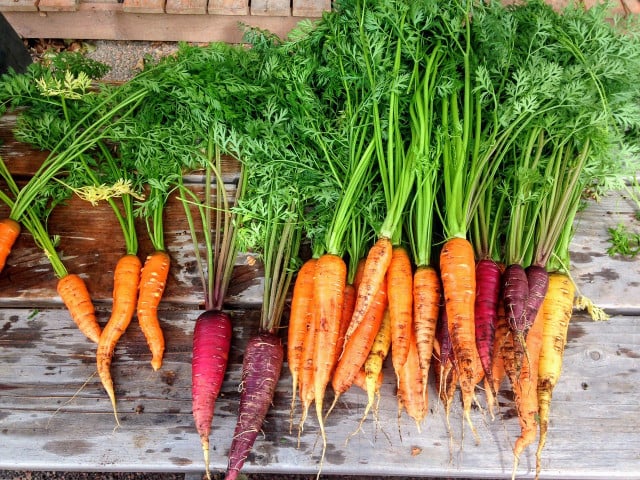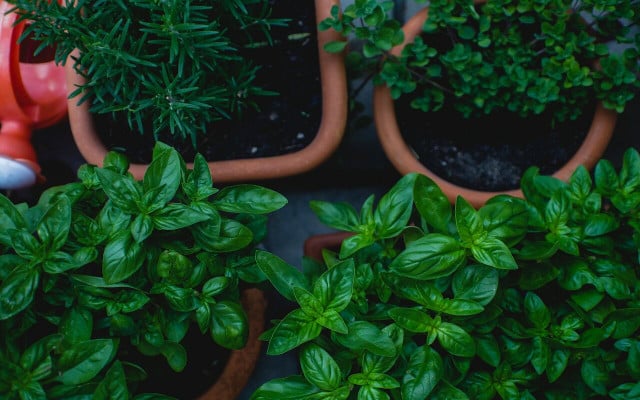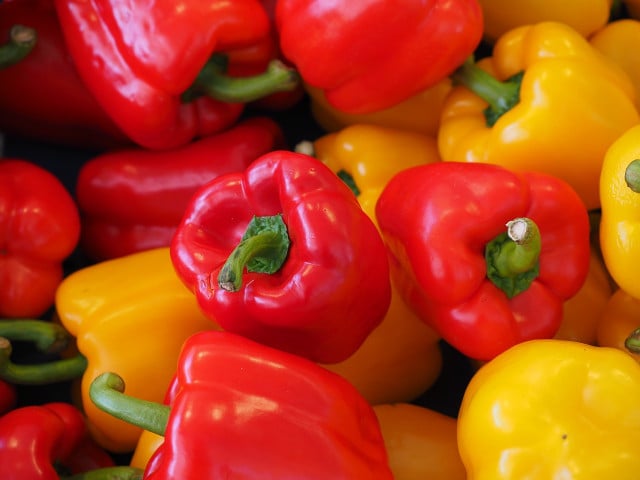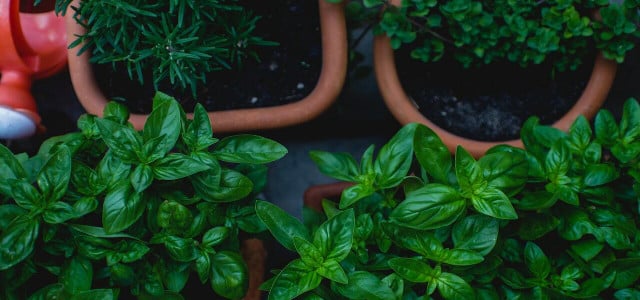Looking for ways to ensure your tomatoes thrive? Tomato companion plants can be very beneficial — learn which ones you should plant in your garden.
Planting various plants together in a way that they can benefit from each other is known as companion planting. This method is based on the notion that particular plant pairings can improve soil quality, pest control, and increase yield. There are many advantages of planting tomato plants together with tomato companion plants that make them grow healthier and more fruitful. These include:
- Improved soil quality: To effectively thrive, tomato plants require nutrient-rich soil. By planting nitrogen-fixing plants like beans or peas next to tomato plants, the quality of the soil can be improved. The nitrogen that these plants capture from the air and store in the soil can be used to nourish tomato plants. Furthermore, intercropping with crops like clover or alfalfa can preserve and improve the soil as well.
- Pest control: Companion crops can also aid in avoiding the spread of pests that might harm tomato plants. For instance, growing marigolds or nasturtiums close to tomato plants might help ward off pests like aphids, whiteflies, and spider mites. Planting chives, garlic, or onions can also help ward off pests like fruit flies and tomato moths.
- Increased yield: Tomatoes can become more fruitful when they are planted next to tomato companion plants. As an example, their flavor and aroma can be enhanced by growing basil or parsley adjacent to tomato plants.
All in all, companion planting is an excellent method to boost tomato plant health and output. Gardeners may establish a diverse ecosystem in their garden by selecting the proper plant combinations. There is a wide selection of tomato companion plants available; choose which works best for your space.
The Top 5 Tomato Companion Plants

(Foto: CC0 / Pixabay / ShireShy)
There is a wide variety of plants you can add to your garden that will help your tomatoes thrive – some are edible, while others will provide a lovely pop of color and attract beneficial insects to your garden.
- Marigolds: Marigolds also attract beneficial insects like hoverflies and ladybugs, which pollinate tomato blossoms and help manage pests. Moreover, they can aid in the prevention of infections such as powdery mildew as they contain antifungal qualities. Marigolds should be planted alongside tomatoes in full light and well-drained soil. Marigolds’ potential drawbacks include that they self-seed and grow weedy if left unchecked, as well as they can root rot in poorly drained soil.
- Garlic: As a natural insect repellent, garlic can aid in the protection of plants from pests like aphids, spider mites, and whiteflies. Additionally, it might enhance the flavor of tomatoes. In full light and well-drained soil, grow garlic next to tomatoes. Garlic’s potential drawbacks include its propensity to grow fast and become weedy if left unchecked, as well as its vulnerability to fungi that cause illnesses like rust and onion blight.
- Nasturtium: Nasturtium is a vibrant and tasty plant that grows well with tomatoes. Its edible flowers and leaves are often used in salads and other foods and give them a peppery flavor. Nasturtiums bring in insects, like ladybugs or lacewings, that can aid with pest management, including the eradication of aphids and spider mites. Nasturtiums should be planted next to tomatoes in full light and well-drained soil. Nasturtiums’ potential drawbacks include their likelihood to self-seed, which can make them weedy if left unchecked, as well as their vulnerability to pests like aphids.
- Carrots: Carrots make a good tomato companion plant because they soften the soil and attract pest-controlling insects. Carrots should be planted in a location with well-drained soil and full light. On the negative side, carrots can root rot and possibly draw carrot rust insects.
- Calendula: Even though calendula can self-seed and also potentially root rot if not planted right, it is an excellent tomato companion plant, as it can attract helpful insects that pollinate tomato flowers. Additionally, calendula contains antifungal qualities that can fight against conditions like powdery mildew. To make sure that the calendula grows well, plant it in full sun and well-drained soil.
Herbs to Plant With Tomatoes



(Foto: CC0 Public Domain / Unsplash / Markus Spiske)
Some of the best tomato companion plants are herbs which makes sense as a benefit of companion planting is increased flavor.
- Oregano: Pests like spider mites or aphids can be repelled with oregano as it is a natural insect repellent. Additionally, it makes tomatoes more flavorful and helps them grow better. Put oregano in full sun and well-drained soil, when used as a tomato companion plant. Potential drawbacks of oregano include that it likes to spread fast and that it is vulnerable to fungi that can cause illnesses.
- Rosemary: Due to its ability to ward off pests, rosemary makes a wonderful companion plant for tomatoes and it can even guard tomatoes against illnesses like powdery mildew. To guarantee its well-being, plant rosemary in well-drained soil and full sun as it can root rot if it’s planted in poorly drained soil.
- Thyme: Like oregano, thyme is an all-natural insect repellent and keeps pests at bay. Additionally, thyme contains antifungal qualities and can prevent powdery mildew. Thyme should be planted in full sun and well-drained soil. Also like many others in this list, thyme tends can root rot when planted in poorly drained soil and it can turn woody.
- Nettles: Nettles make an excellent tomato companion plant because they can attract pest-controlling insects and they help tomatoes grow better and more fruitful. Nettles should be planted next to tomatoes in partial to full light and well-drained soil. The potential drawbacks of nettles are that they can spread quickly and turn weedy if left unchecked as well as that they can irritate the skin if touched in the wrong way.
- Sage: Whiteflies and spider mites can be repelled by sage which is a natural insect repellent. Additionally, it has antifungal qualities and can fight against powdery mildew. Sage should be planted in full sun, close to tomatoes. Sage’s potential downsides are that it can turn woody and that it can root rot if it is planted in poorly drained soil.
- Dill: Dill can attract good insects like ladybugs and wasps, which can reduce pests like aphids and spider mites. Furthermore, it can help the growth of tomato plants. Dill should be planted in full sun and well-drained soil – next to tomatoes. Possible drawbacks of dill are its likelihood and its vulnerability to fungi that cause ill
- Chives: Chives may help ward off pests like aphids, spider mites, and tomato moths. Moreover, chives are beneficial to tomato development and they can enhance the health of the entire plant. Plant chives close to tomatoes in well-drained soil and full light. The drawbacks of chives are their vulnerability to fungi that cause illnesses.
- Parsley: Parsley may draw in helpful insects like hoverflies and predatory wasps that can aid in pollinating tomato blooms and controlling pests. Parsley also helps with the development and flavor of tomatoes. Unfortunately, as in other examples in this list, parsley is vulnerable to fungi-related illnesses such as root rot and it can also attract spider mites.
- Basil: Basil can enhance the flavor of tomatoes and stops pests like aphids and whiteflies. Basil should be planted close to tomatoes in a sunny spot with well-drained soil. Drawbacks of basil are its tendency to attract spider mites and its sensitivity to fungi that cause diseases like downy mildew.
- Borage: Borage is a wonderful tomato companion plant because it brings in beneficial insects such as bees and wasps, which may pollinate tomato blossoms and suppress pests. Borage should be planted alongside tomatoes in full sun and well-drained soil. Unfortunately, borage can spread very fast and become weedy if not managed.
Should Any Plants Not Be Planted With Tomatoes?



(Foto: CC0 / Pixabay / Hans)
Looking at the list above, there are many plants that make excellent tomato companion plants. However, there are a couple of plants that should not be planted with tomatoes at all, including:
- Plants of the same family: Such as tomatoes, such as peppers, eggplants, and potatoes, are susceptible to the same pests and illnesses. Spreading illnesses and pests can be made more likely by planting plants close to each other.
- Plants in the brassica family: Such as cauliflower, broccoli or cabbage can emit toxins that can prevent tomato plants from growing. When planted together, this may lead to and decreased growth and harvests.
- Fennel emits toxins that can limit tomato development and ruin the flavor. This might lead to bad growth and taste when put together.
- Tomatoes and corn both tend to grow strongly, which may cause nutrient competition if they are planted too close to each other.
- Walnut trees have a chemical in their roots and leaves that is harmful to tomato plants and other delicate plants. Therefore, tomatoes may grow poorly and yield less if planted close to walnut trees.
All in all, tomato companion planting can seem challenging at first but with the right knowledge, it can be a great way to make plants more fruitful and healthier.
Read more:
- 20 Best Companion Plants for Kale
- How to Grow Bok Choy: 7 Tips for the Best Results
- Eggshells as Fertilizer for Garden Plants and Seed Starter
** Links to retailers marked with ** or underlined orange are partially partner links: If you buy here, you actively support Utopia.org, because we will receive a small part of the sales proceeds. More info.
Do you like this post?








